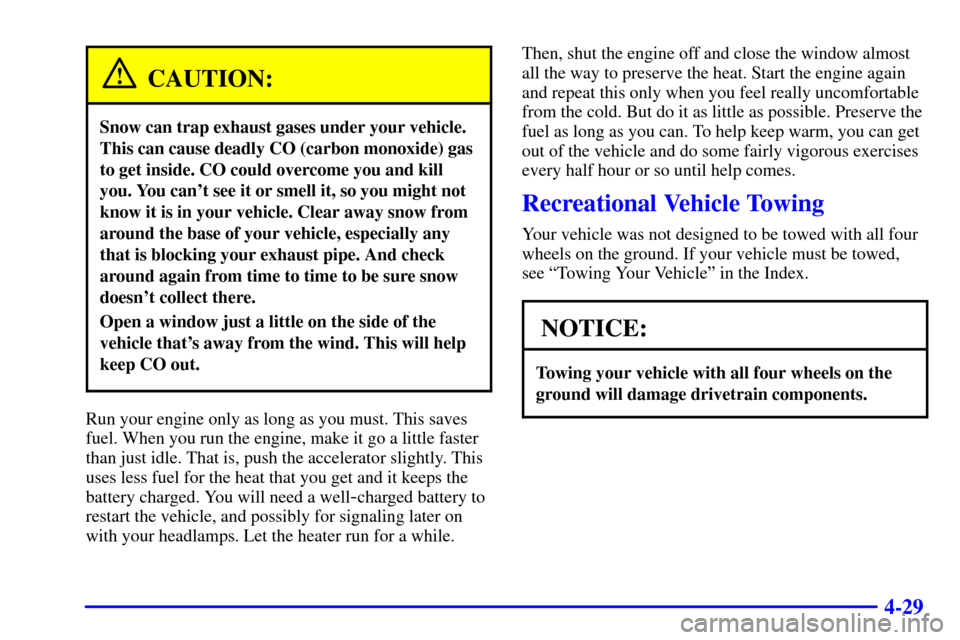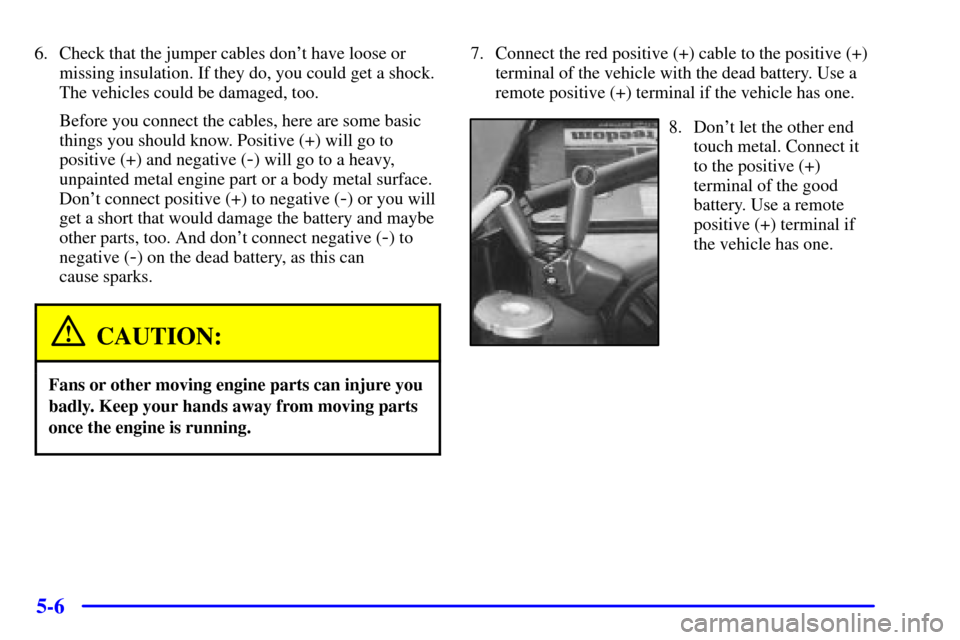Page 2 of 429
Free lockout assistance
Free dead-battery assistance
Free out-of-fuel assistance
Free flat-tire change
Emergency towing
1-800-CHEV-USA
(For vehicles purchased in Canada,
call
1-800-268-6800)
that provides in an emergency:
1-800-CHEV-USA
(For vehicles purchased in Canada,
call
1-800-268-6800)
Bumper-to-Bumper
3-years/36,000 miles (60 000 km)
Limited Warranty
Courtesy
Transportation
Every
2000 Venture
under warranty is
backed with the
following
services:
Page 135 of 429

2-31
Resetting the Power Sliding Door
The power sliding door may operate incorrectly or not at
all because of the following conditions:
�A low voltage or dead battery,
�disconnecting the battery, or
�if the IGN 1, B/U LAMP, RADIO or
PWR SEAT/PSD fuse is removed or blown.
See ªFuse Panelº in the Index for more information
about your fuse panel.
If any of these conditions occur, the power sliding door
will need to be reset. To do this, follow the directions
listed here. It will be easier if you read through them
once before beginning this procedure.
1. Check to be sure the power sliding door is unlocked
and securely closed.
2. Turn the ignition key to OFF.
3. Turn off the power sliding door override on
the switchbank.
4. Remove the RADIO fuse from the underhood fuse
and relay center. Leave it out for 30 seconds.5. Reinstall the fuse and wait 10 seconds.
6. Turn on the power sliding door override on
the switchbank.
7. Push either of the power door buttons to open the
power sliding door.
8. Open the door.
9. Wait five seconds and close the door by pushing
either power door button.
10. Wait five seconds and repeat Steps 7 through 9.
If the door does not rest in the fully open position
after repeating Step 7, repeat Steps 7 through 9 again.
If the door still does not operate correctly, see your
dealer for service.
Canceling the Sliding Door Security Lock
1. Unlock the sliding door and open the door from
the outside.
2. Move the security lock lever all the way down.
The sliding door lock will now work normally.
Page 279 of 429

4-29
CAUTION:
Snow can trap exhaust gases under your vehicle.
This can cause deadly CO (carbon monoxide) gas
to get inside. CO could overcome you and kill
you. You can't see it or smell it, so you might not
know it is in your vehicle. Clear away snow from
around the base of your vehicle, especially any
that is blocking your exhaust pipe. And check
around again from time to time to be sure snow
doesn't collect there.
Open a window just a little on the side of the
vehicle that's away from the wind. This will help
keep CO out.
Run your engine only as long as you must. This saves
fuel. When you run the engine, make it go a little faster
than just idle. That is, push the accelerator slightly. This
uses less fuel for the heat that you get and it keeps the
battery charged. You will need a well
-charged battery to
restart the vehicle, and possibly for signaling later on
with your headlamps. Let the heater run for a while.Then, shut the engine off and close the window almost
all the way to preserve the heat. Start the engine again
and repeat this only when you feel really uncomfortable
from the cold. But do it as little as possible. Preserve the
fuel as long as you can. To help keep warm, you can get
out of the vehicle and do some fairly vigorous exercises
every half hour or so until help comes.
Recreational Vehicle Towing
Your vehicle was not designed to be towed with all four
wheels on the ground. If your vehicle must be towed,
see ªTowing Your Vehicleº in the Index.
NOTICE:
Towing your vehicle with all four wheels on the
ground will damage drivetrain components.
Page 296 of 429

5-6
6. Check that the jumper cables don't have loose or
missing insulation. If they do, you could get a shock.
The vehicles could be damaged, too.
Before you connect the cables, here are some basic
things you should know. Positive (+) will go to
positive (+) and negative (
-) will go to a heavy,
unpainted metal engine part or a body metal surface.
Don't connect positive (+) to negative (
-) or you will
get a short that would damage the battery and maybe
other parts, too. And don't connect negative (
-) to
negative (
-) on the dead battery, as this can
cause sparks.
CAUTION:
Fans or other moving engine parts can injure you
badly. Keep your hands away from moving parts
once the engine is running.
7. Connect the red positive (+) cable to the positive (+)
terminal of the vehicle with the dead battery. Use a
remote positive (+) terminal if the vehicle has one.
8. Don't let the other end
touch metal. Connect it
to the positive (+)
terminal of the good
battery. Use a remote
positive (+) terminal if
the vehicle has one.
Page 297 of 429
5-7
9. Now connect the
black negative (
-) cable
to the good battery's
negative (
-) terminal.
Don't let the other end touch anything until the next
step. The other end of the negative (
-) cable doesn't go
to the dead battery. It goes to a heavy, unpainted metal
part on the engine of the vehicle with the dead battery.
10. Attach the cable at least
18 inches (45 cm) away
from the dead battery,
but not near engine
parts that move.
The electrical connection is just as good there, but the
chance of sparks getting back to the battery is much less.
11. Now start the vehicle with the good battery and run
the engine for a while.
12. Try to start the vehicle with the dead battery.
If it won't start after a few tries, it probably
needs service.
13. Remove the cables in reverse order to prevent
electrical shorting. Take care that they don't touch
each other or any other metal.
Page 298 of 429
5-8
Removal Procedure
A. Heavy, Unpainted Metal Engine Part
B. Good Battery
C. Dead Battery
Towing Your Vehicle
CAUTION:
To help avoid serious personal injury to
you or others:
�Never let passengers ride in a vehicle that is
being towed.
�Never tow faster than safe or posted speeds.
�Never tow with damaged parts not
fully secured.
�Never get under your vehicle after it has
been lifted by the tow truck.
�Always secure the vehicle on each side with
separate safety chains when towing it.
�Use only the correct hooks.